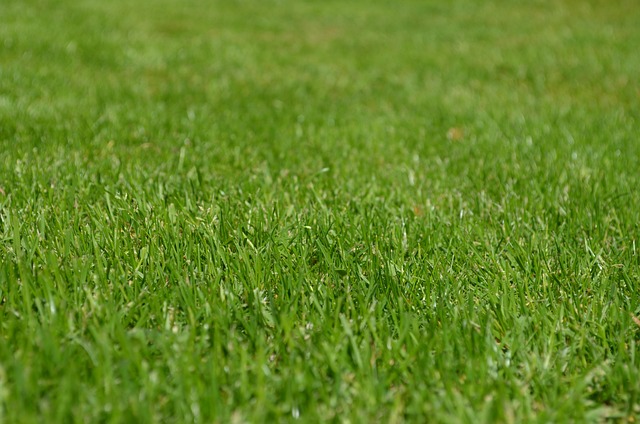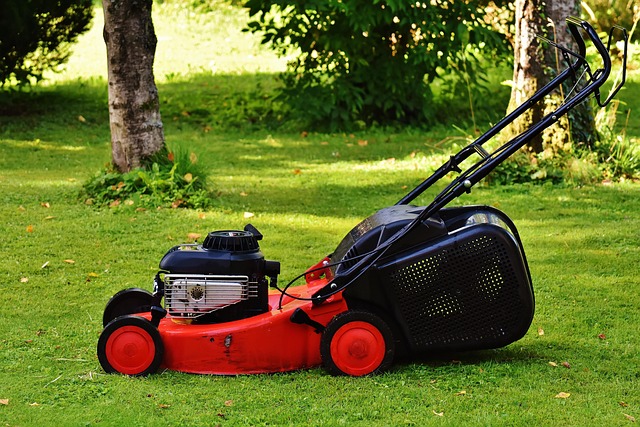Mulching and edging are essential practices in lawn care and landscaping. Mulch improves soil health by retaining moisture, suppressing weeds, and providing nutrients for grass growth. Edging creates clean lines, prevents weed intrusion from adjacent beds, and keeps grass off sidewalks. Both techniques contribute to a lush, well-maintained lawn and landscape, with regular application promoting optimal aesthetics and health.
Enhance your lawn’s health and landscape with mulching and edging, essential practices in lawn care and landscaping. This guide delves into the benefits of mulching—from retaining moisture to suppressing weeds—and explores various types suitable for different grass varieties. For edging, we detail techniques to create crisp lines, completing your outdoor space. Learn best practices for consistent, effective lawn care and landscaping maintenance, ensuring a vibrant, well-defined yard all year round.
- Understanding Mulching: The Benefits and Types for Lawn Health
- Edging Techniques: Creating Clean Lines and Enhancing Your Landscape
- Best Practices for Effective Lawn Care and Landscaping Maintenance
Understanding Mulching: The Benefits and Types for Lawn Health

Mulching is a vital lawn care and landscaping practice that involves placing organic material, known as mulch, on top of the soil to enhance its health and beauty. This simple yet powerful technique offers numerous benefits for your lawn, making it an essential part of any well-maintained garden. By understanding the various types of mulch and their advantages, you can transform your lawn into a lush, vibrant space.
One of the primary benefits of mulching is retaining moisture in the soil, which is crucial for lawn health. Organic mulches act as a protective barrier, reducing water evaporation and ensuring your grass stays hydrated. They also suppress weeds effectively, preventing their growth by blocking sunlight. Additionally, mulching contributes to nutrient-rich soil over time as the organic material decomposes, providing essential nutrients that promote robust grass growth. Different types of mulch, such as wood chips, straw, or compost, offer unique advantages, catering to various preferences and lawn needs in lawn care and landscaping.
Edging Techniques: Creating Clean Lines and Enhancing Your Landscape

Creating clean lines and defining your lawn’s edges is an essential aspect of lawn care and landscaping, adding structure and visual appeal to your outdoor space. There are several edging techniques to choose from, each offering unique benefits. One popular method involves using manual edgers or string trimmers to cut along the border of your lawn, creating sharp, precise lines. This technique requires some physical effort but allows for intricate designs and tight corners.
For a more efficient approach, consider investing in an edging tool or machine. These tools are designed specifically for this purpose and can quickly trim and shape the edges, saving time and ensuring consistent results. Edging not only improves the overall look of your lawn but also helps to prevent weeds from invading adjacent beds, keeping your landscape neat and well-maintained.
Best Practices for Effective Lawn Care and Landscaping Maintenance

Mulching and edging are essential practices in lawn care and landscaping, offering numerous benefits beyond aesthetics. For effective maintenance, consider these best practices: First, choose the right mulch for your lawn type. Organic mulches enrich the soil, suppress weeds, and retain moisture, while inorganic options provide a protective barrier and prevent erosion. Apply mulch consistently around trees, shrubs, and garden beds, maintaining a uniform depth to avoid rot or pest attraction.
Edging, or trimming the border between your lawn and sidewalks/drives, prevents grass from encroaching and keeps the landscape tidy. Use a string trimmer or edger for precise cuts, ensuring you don’t damage nearby plants or structures. Regular edging, especially after major weather events like storms or heavy snow, is crucial for maintaining a polished look and promoting healthy lawn growth.
Mulching and edging are essential practices in lawn care and landscaping, offering numerous benefits from enhancing aesthetics to promoting healthy grass growth. By understanding different mulching types and mastering edging techniques, you can transform your outdoor space into a lush, well-maintained oasis. Implement these best practices consistently for optimal results, ensuring your lawn stands out as a testament to your dedication to meticulous landscape maintenance.




